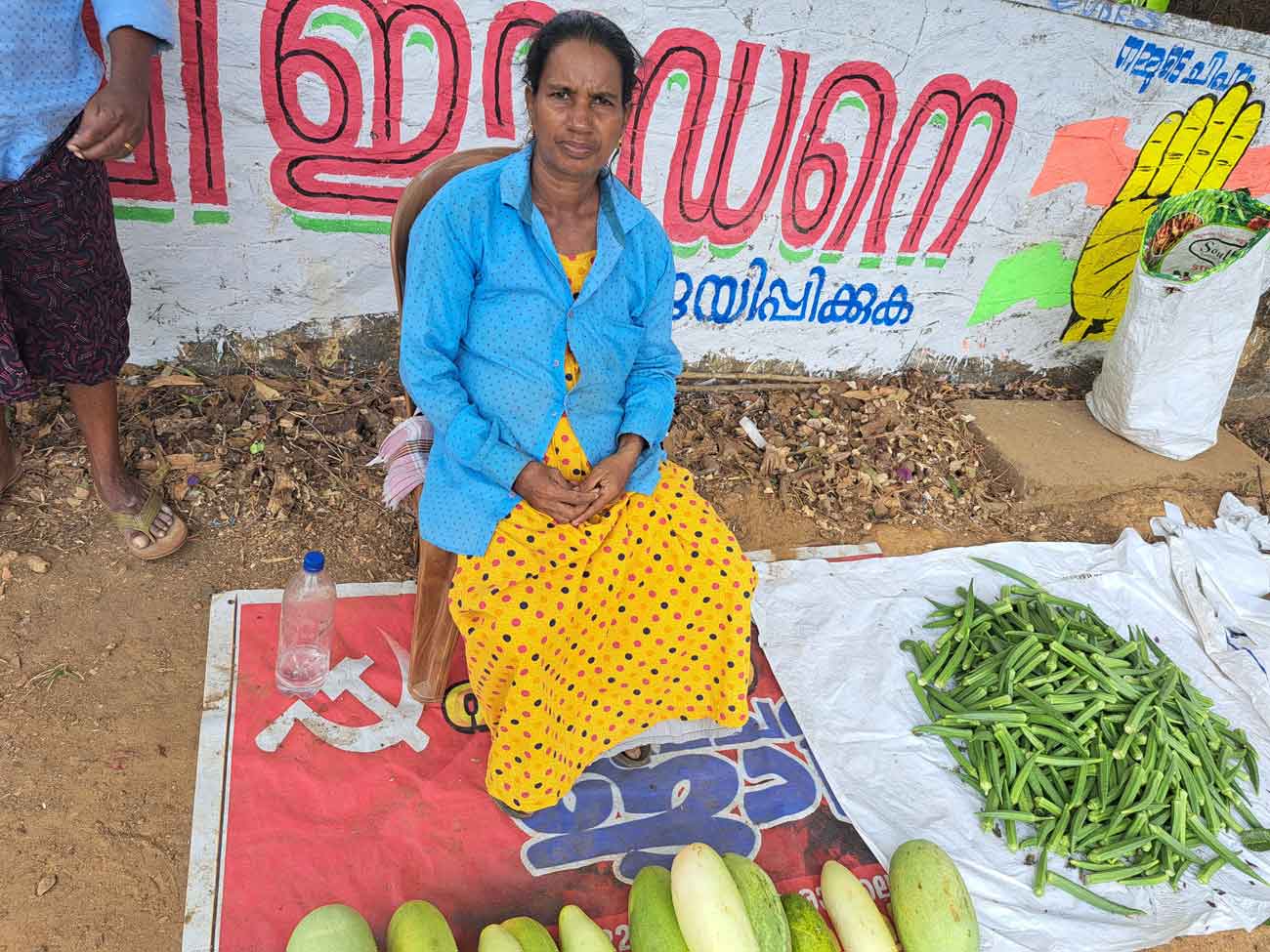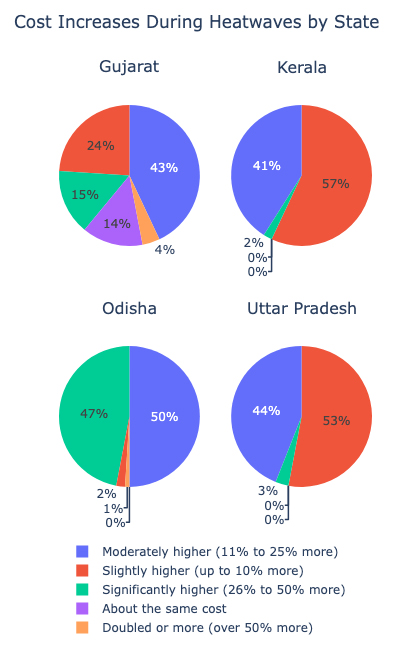
By Akash Yadav, AIDMI, India
Economic Challenges of India’s Heat-Exposed Workers
Heatwave risks and losses are usually not fully perceived by vulnerable populations exposed to extreme heat. However, as climate change intensifies and extreme heat events become more common, workers are slowly realising the economic instability caused by such extreme events. A recent survey by AIDMI across Gujarat, Odisha, Kerala, and Uttar Pradesh reveals that affected populations, especially street vendors, are voicing their need to adapt to these harsh conditions. Their experiences highlight multifaceted challenges and emphasise the necessity for targeted economic resilience initiatives.

Economic Impacts of Heatwaves
Based on our results, we find that heatwaves significantly impact heat-exposed workers in all the states surveyed. In Ahmedabad (Gujarat), 43% experienced income loss for less than a week, 31% for 1-2 weeks, and only 15% reported no loss. In Lucknow (UP), 65% faced income loss for 1-2 weeks, with only 4% reporting no loss. Odisha, where the respondents were from primarily rural backgrounds, had 50% facing income loss for over two weeks, and none reporting no loss. Kerala showed better resilience with 49% reporting no loss and 41% facing short-term losses.
The diverse economic impacts highlight the vulnerability of different occupational groups. Street vendors, construction labourers, and small business owners are among the most affected, experiencing significant disruptions to their livelihoods. These workers, dependent on daily earnings, face immediate financial hardships when extreme heat hampers their ability to work effectively.
Rising Costs During Heatwaves
The financial strain during heatwaves is considerable. In Gujarat, 43% reported 11-25% higher costs, while 15% experienced 26-50% higher costs. In Kerala, 57% faced up to 10% higher costs, with 41% experiencing 11-25% higher costs. In Odisha, 50% reported 11-25% higher costs, and 47% faced 26-50% higher costs. In Uttar Pradesh, 53% experienced up to 10% higher costs, with 44% facing 11-25% higher costs.
Water bills also surged, particularly in rural Odisha (84% reported up to a 50% increase) and Uttar Pradesh (94% reported up to a 25% increase). Kerala demonstrated better management, with 97% reporting no increase in water bills.
Healthcare Costs and Economic Strain
Healthcare spending due to heat-related ailments varied significantly. In Gujarat, 43% of respondents faced minor healthcare costs, aligning with the reported minor health impacts like heat cramps and exhaustion. In contrast, Kerala reported 61% experiencing no healthcare costs, which correlates with the minimal health challenges reported. Odisha, experiencing moderate to severe health issues, saw 65% reporting moderate increases in healthcare costs. Uttar Pradesh reported a mix of minor (51%) to moderate (42%) increases in hospital costs, reflecting the range of health impacts from heat strokes to exhaustion observed in the state.
The increase in healthcare costs places an additional financial burden on households already struggling with reduced incomes and higher living expenses. This economic strain is exacerbated by the need for cooling solutions, medical treatments, and other heatwave-related expenses.
In conclusion, the economic challenges faced by heat-exposed workers due to heatwaves are significant and multifaceted. Rising costs during heatwaves place an additional burden on vulnerable populations, requiring concerted efforts to enhance community resilience.